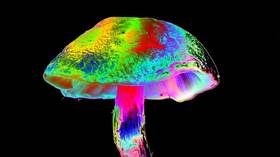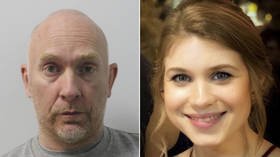As a doctor, I believe magic mushrooms probably CAN help depression… but only if they’re administered by medical experts

History contains many examples of recreational drugs becoming prescription medication, so there’s little to fear from magic mushrooms being employed to treat depression – as long professionals are calling the shots.
Clinical depression affects millions of people around the globe. Over seven percent of Americans and almost 20% of Brits have experienced a major depressive episode; it’s the most common psychiatric diagnosis worldwide and is the second-highest cause of disability, behind chronic back pain. A veritable alphabet soup of pharmaceutical therapies exist, from MAOIs and TCAs to SSNIs and SNRIs, but none of them are curative. Considering the debilitating nature of the disease and its dreadful impact on quality of life, it’s little surprise that the search for more and better treatment options continues.
A serious contender has emerged within the last few years: psilocybin, the hallucinogenic substance in the various species of so-called ‘magic mushrooms’, has been showing impressive potential in clinical trials. From California to England to France, users are relating (often anonymously) their individual experiences with the drug, and psychedelic therapies look to be getting some serious funding behind them. However, psilocybin is still highly illegal, classified as Schedule I in the US and Class A in the UK, despite recent efforts by some cities to decriminalize its possession. Should the looming prospect of psilocybin’s inclusion into the doctor's medicine bag be a cause for concern? Not necessarily, despite its current verboten status – provided its clinical use is overseen by medical professionals for formally diagnosed indications.
In the context of the history of pharmacology, the phenomenon of psychoactive substances slowly making the transition from recreational drug to prescription medication isn’t particularly noteworthy. The first anesthetic gas discovered – and one that’s still in every operating room today – was nitrous oxide. Described by scientist-clergyman Joseph Priestley (who also discovered oxygen) in 1772, the psychotropic effects of N2O were detailed by the great British chemist and inventor Sir Humphrey Davy in 1800. In ‘Researches, chemical and philosophical’, Davy recounts the effects of “laughing gas,” as he named it, on various volunteers. Most experienced a pleasant effect, although not all – including Priestley himself, of whom Davy wrote: “had unpleasant fullness of the head and throbbing of the arteries, which prevented him from continuing the respiration.”
Also on rt.com The number of children on antidepressants has soared. Is it a real crisis or one invented by psychiatrists seeking new patients?The salient point here is that nitrous oxide existed strictly as a party drug until 1844, when perhaps the most prominent “father of anesthesia,” dentist Horace Wells, first demonstrated the use of laughing gas as a surgical anesthetic at Massachusetts General Hospital. Around the same time, ether was undergoing the same metamorphosis, moving from the main attraction of “ether frolics” to the operating theater thanks to the efforts of Crawford Long and Thomas Morton. From the dawn of modern medicine, recreational drugs have been finding new applications in clinical settings.
(Horace Wells, sadly, had left his demonstration at Mass General thinking he was a failure; he later became addicted to chloroform, threw sulfuric acid on a pair of prostitutes one night, and was sent to prison, where he anesthetized himself with more chloroform before slitting his wrists. He died at the age of 33, never aware that just 12 days before his death the Paris Medical Society had recognized his contribution to medicine and awarded him an honorary MD.)
It’s also a fact that some drugs are used simultaneously for recreation and in appropriate clinical settings. Ketamine is a dissociative hallucinogenic, similar to PCP, which is famous as a club drug, but is also a commonly used anesthetic and, like ‘magic mushrooms’, has found new applications in psychiatry, where it’s proved to be an effective treatment for major depression. (It’s also famous as a ‘horse tranquilizer’, perhaps the most well-known equine medicine until ivermectin began making news.) Abuse of fentanyl, a synthetic opioid 100 times more powerful than morphine, is reaching epidemic proportions in the United States, killing tens of thousands a year (including its most famous victim, the legendary musical artist Prince), but it’s also safely given daily in operating rooms by anesthesia providers around the world. Even heroin began its existence as a doctor-prescribed cough suppressant until its harmful addictive potential was realized. (Medical trivia: the drug’s real name is diacetylmorphine; Heroin is actually a brand name, created by Bayer.)
Also on rt.com Dismissing religious objections to taking the Covid vaccine flies in the face of the principles the United States was founded onPsilocybin is proving to have a good safety profile, with low addiction and abuse potential, and promising efficacy, holding its own against escitalopram (Lexapro), an established antidepressant, in clinical trials. It isn't without risks, though: anxiety, paranoia, psychotic episodes, disturbing hallucinations, and the proverbial ‘bad trip’. What the public, the eager and dubious alike, must keep in mind is that there’s a vast chasm between the dangers of self-medication and the safety of physician-directed use after sufficient clinical studies have been conducted. Propofol, for example, is currently the most common anesthetic induction agent, used every day by the bucketload in thousands of surgery centers and operating rooms without incident. However, most people have probably heard of it in the context of Michael Jackson’s death. The difference in outcomes is simple: surgical patients are monitored by trained anesthesia providers, and the King of Pop wasn’t.
The application of an old hippie drug to new clinical purpose shouldn’t necessarily cause any particular trepidation, as long as its use stays firmly within the control of the appropriate physicians.
Don't do drugs for fun, mushrooms or otherwise. Leave it to trained professionals, and only when use is medically indicated.
Think your friends would be interested? Share this story!
The statements, views and opinions expressed in this column are solely those of the author and do not necessarily represent those of RT.













